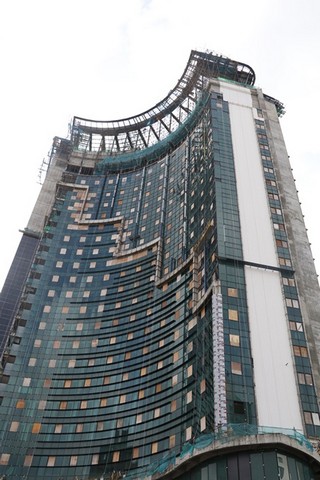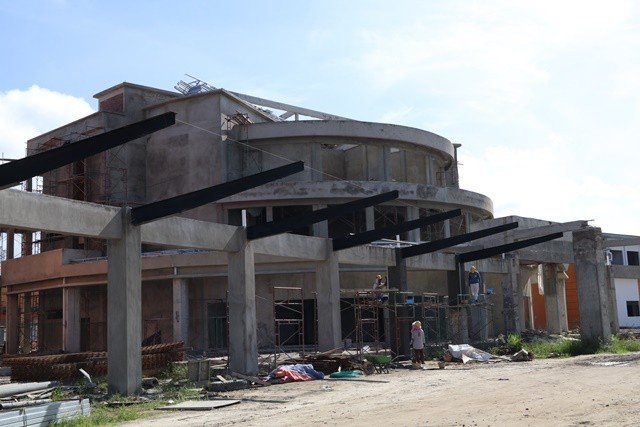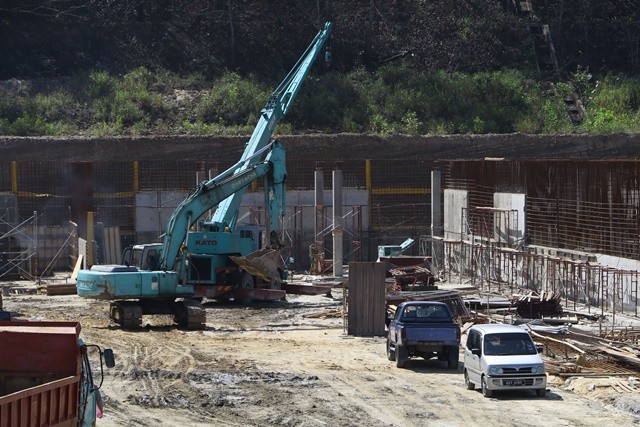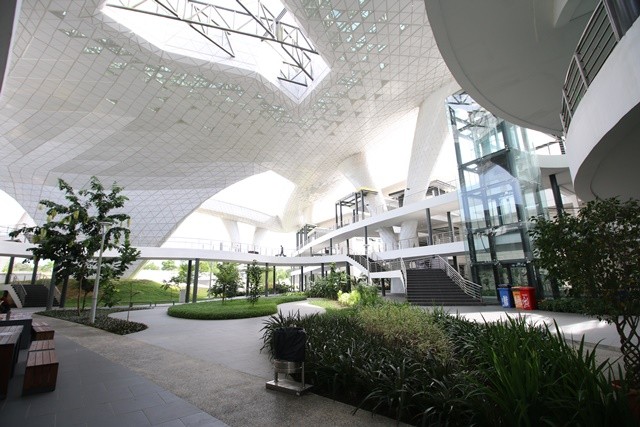Under the PCDS 2030, “basic infrastructure” had been identified as one of the seven enablers to support the seven strategic thrusts with greater emphasis on innovation, creativity and competitiveness.
“We need to grow our local economy as well as attract potential investors to accelerate our socio-economic growth. Hence, to ensure that we must provide reliable and convenient infrastructure facilities for both our local communities and investors alike,”
“Reliable infrastructure such as roads, bridges as well as buildings and other necessary amenities are critical if our economic sector is to implement an investment strategy that can truly contribute and spur Sarawak’s economic growth.”

This was said the Sarawak Premier during the “Enhancing Sarawak’s Construction Industry’ event on 8 February 2023 at Kuching.
Under PCDS 2030, the adoption of IBS and GBI has been listed as one of the catalytic initiatives for sustainable building development.
What is IBS and GBI?
Introduced in the 1960s, IBSrefers to a term used in Malaysia for a technique of construction where by components are manufactured in a controlled environment, either at site or off site, placed and assembled into construction works.

The Construction Industry Development Board (CIDB) has classified the IBS into five categories as follows:
- Precast concrete framed, panel and box
- Steel formwork system
- Steel framed buildings and roof trusses.
- Prefabricated timber frame system
- Blockwork systems
Example of construction projects which utilise IBS components in Sarawak such as Institute Aminuddin Baki Sarawak Project, Faculty of Medicine and Health Sciences University Malaysia Sarawak (UNIMAS) Project and Village Library Projects.
GBI is an environmental rating system for buildings developed by PAM (Pertubuhan Arkitek Malaysia/Malaysian Institute of Architects) and ACEM (the Association of Consulting Engineers Malaysia).
GBI is based on the six (6) main criterias;
- Energy Efficiency
- Indoor Environment Quality
- Sustainable Site Planning & Management
- Materials & Resources
- Water Efficiency
- Innovation
In Sarawak, among the examples of GBI buildings includes the Menara Sarawak Energy, which was the first building in the State to achieve GBI certification and Hock Seng Lee (HSL) building, belonging to the private sector.
Aside from that, University of Technology Sarawak (UTS) has become the first university in the world to be platinum-rated for the GBI award.
It scored 87 points, one more than the minimum 86 which is required for the award.
Why investing in sustainable buildings?
Nowadays, there is an increase demand for housing due to a rise in population.
Like most if not all industries, the construction industry is under scrutinization to improve efficiency and project delivery as there is a rise sustainability awareness globally.


Sustainable construction involved developing building and structures that can maximise the use of sustainable resources while causing less pollution and waste, improve the quality of life of the people in the structure, offer flexibility and allow for future changes, support natural environments and habitats and deliver profit at the same time.
According to multiple studies, IBS is usually associated with sustainable construction which is described as the ability of the construction system to consider the environmental impact of a building over its entire lifetime, while optimizing its economic viability and the comfort and safety of its occupants.
It is said that the concept of IBS usually associates with the preservation of the environment which also concern on related issues such as the efficient use of resource, continual social progress, promising economic growth, and improve standard of living.
The main goals of IBS construction are to meet present day needs for housing, working environments and infrastructure without compromising the ability of future generations to meet their own needs in times to come.
Aside from that, by using IBS the industry can benefit from shorter project completion timelines and higher work quality, resulting in greater cost-efficiency.
Presently, one of the challenges in Sarawak is shortage of skill labour and the increase cost of construction materials.
Thus, the concept of construction using IBS is proposed to reduce our dependency on intensive labour works and to reduce the cost of construction.
Benefits of green buildings
There are many benefits to investing in green buildings.
While building one may be costly compared to non-green ones, green buildings incorporate unique construction features that ensure efficient use of resources such water and energy.
For example, by using task lighting strategy and a lot of daylight, green buildings vastly reduce the amount of power used in lighting systems.

Green building also allows for the use of alternative sources of water such as rainwater, thus reducing water waste.
Aside from that, occupants also get to enjoy better living standards as green buildings has better air quality due to proper ventilation systems.
All these features add up to good living standards and a healthy lifestyle due to the safety of materials used in the construction of such buildings.
As green buildings are built with the consideration of protecting the environment, it becomes easier to minimise the project’s carbon footprint as there is a reduction of harmful waste and use of renewable energy also affects the carbon emissions generated by the building.
References:
Yunus, R., Yang, Jay., (2011) Sustainability Criteria for Industrialised Building Systems (IBS) in Malaysia. Science Direct.
Bohari, A.,A.,M, Kipli, Kumalasari., Mahat, Noorsaidi., Industrialised Buiding System (IBS) IN Sarawak Construction Industry.
Saggaff, A., (2017) Industrialized building system – an innovative construction method. SICEST




